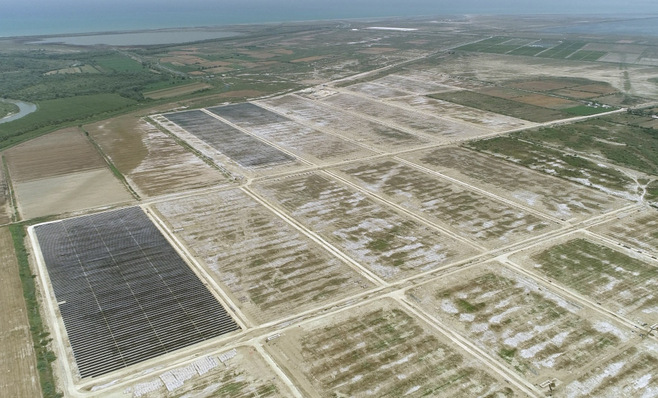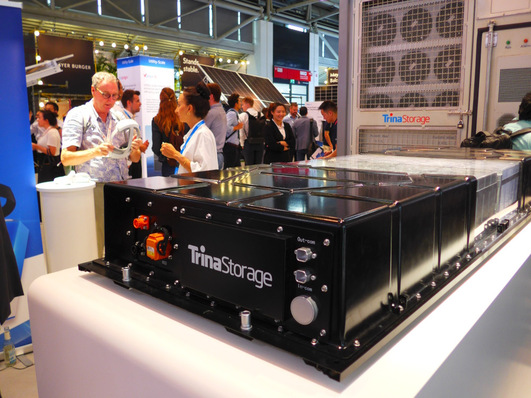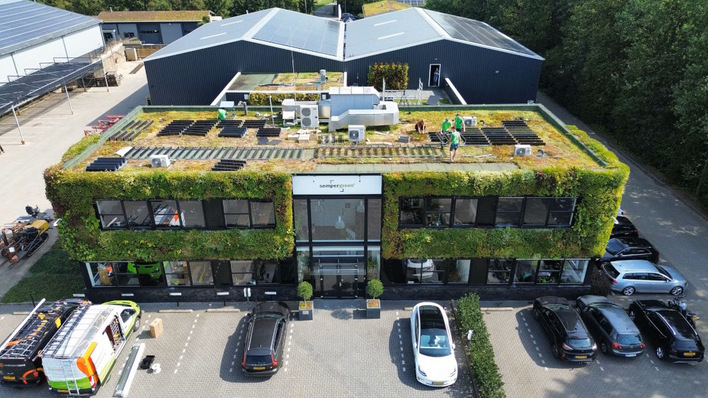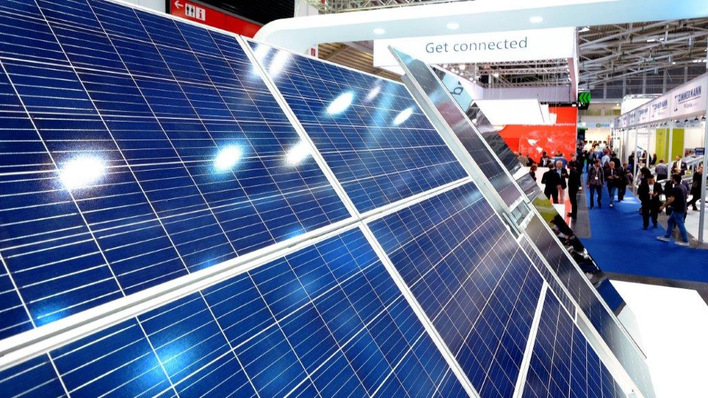John Deere in Bruchsal have set up a photovoltaics installation of 30,000 square metres on their company premises. With 6,500 panels, the generator installed on the roofs of their European parts distribution centre (E-PDC) is among the largest in Europe, generating a total of 1.6 megawatts. “This venture is part of our strategy to reduce our global carbon footprint,” says Jens Hüttenbräucker, project manager at John Deere. “At the same time, we are becoming less dependent of external electricity providers, allowing us to save a significant amount of electricity.”
Low voltage systems still dominate the market
The generator was not connected using string inverters, but rather with central inverters built by Kaco Newenergy. With its MPP trackers, the Powador works at up to 600 volts coming from the solar array. The panels were made by Solarworld. The installation was assembled by Wierig Solar from Siegburg near Bonn, a company that exclusively plans and builds commercial PV installations of 100 kilowatts or more.
Overall, the installation in Bruchsal is meant to produce 1.6 gigawatt hours and avoid over 1,000 tons in carbon emissions. About 98 per cent of the electricity generated is used on site, only two per cent is fed into the grid.
There is no lack of load potential, as both the manufacturing plant and the parts distribution centre have an energy demand that the new PV installation can only cover ten percent of. Wolfgang Voß, manager of the Bruchsal plant, comments: “In collaboration with Wierig Solar, we managed to meet two important criteria. On the one hand, we were able to construct the installation on an aerodynamically favourable undercarriage, taking account of the often inclement local weather conditions. On the other hand, for reasons of quality and better maintenance, we utilised only German components.”
Inverters for commercial installations and solar fields
In commercial rooftop installations, central inverters could become more important. So far, they were more often used for greenfield solar parks. The site in Bruchsal demonstrates, however, that large-scale inverters can also have a niche in the rooftop segment.
Generally speaking, the global inverter market has been doing well: According to IHS, eleven gigawatts in inverter capacity were realised in the first quarter of 2015 alone.
After some difficult – indeed, very difficult – years, the German manufacturers SMA and Kaco are now back in the black and have much improved turnover and profit. Other suppliers such as ABB (formerly Power-One) have been benefiting from the increasing demand. In the growth markets, it is mostly solar parks that are being built, which also has a positive effect on the demand for central inverters.
One unit for the entire world
This was predictable. And for that reason some companies have this year introduced new systems. Even though mains voltage and power frequencies may vary from country to country, large-scale inverters generally have a global market. And because large-scale solar parks are under particularly high pricing pressure, suppliers of inverters also have to calculate their margins quite tightly. In 2008 it was acceptable for a megawatt of inverter capacity to cost 250,000 US dollars. Today, the maximum is 50,000.
For instance, ABB recently introduced their new PVS980, which was an improvement on last year’s PVS800. “This unit is conceived with global applications in mind,” Nannette Bauer of ABB explains. “The hardware is actually the same for all markets. Any network requirements are handled at the software level.”
Higher voltage from the panel array
Beyond the respective electrical operation parameters of the local grids, markets like the US, Japan, Thailand, China or India can have very different regulations. But this is often question of software, as it tends to be handled by the control circuits.
ABB designed its large-scale inverter to handle a DC input voltage of 1,500 volts, in order to harvest as much power per area as possible. High voltage allows lower currents and thus less copper in the rails and wiring. This is an important advantage over string inverters that usually run on 1,000 volts.
SMA last year introduced its Utility Power System, which was presented first as a prototype at the Intersolar in Munich. The new central inverter includes a medium voltage system and a connector to the grid.
The installation runs on direct current of 1,000 or 1,500 volts from the panel array. The smaller inverter has a capacity of 2.2 megawatts, the version with 1,500 volts produces 2.5 megawatts. Even a later upgrade from 1,000 to 1,500 volts is possible, since there is a general trend among large-scale solar parks to run solar generators on 1,500 volts.
Additional grid functionality
SMA has extended the operational range of the new central inverter all the way down to open-circuit voltage. When dimensioning the installation, the system can be set up to 150 percent when it comes to DC voltage relative to AC output. The large-scale inverter has decent capacity reserves and is designed for negative frequency control. There are up to 24 fused input sockets, the circuitry is equivalent to T6 topology. The unit is air-cooled and very compact, as the energy density of 190 kilowatts per cubic metre clearly shows. As much as ten megawatts can be installed in a 40-foot shipping container. The operation temperature range is minus 40 to plus 60 degrees Celsius, and the maximum altitude is 4,000 metres above sea level.
Sungrow is pulling level
Along with the European manufacturers, the Chinese competitor Sungrow is also getting in on the market. In Munich, Sungrow presented an entire line of central inverters, ranging from 100 to 1,260 kilowatts. The SG500MX has so far been the flagship, but newer models have already been announced. “So far, we have not had any decent central inverter solutions,” Tobias Krauth explains. “Now we even market ready-to-use large-scale inverters, i.e. including a medium-voltage switchboard.”
The new giant has been available since the third quarter of last year, and like Sungrow’s string inverters, it also achieves 99 per cent efficiency. The unit can be connected to up to 2.8 megawatts (AC), and is housed in a conventional 20-foot container. It weighs 13.8 metric tons and was initially designed for 1,000 volts DC. In the meantime, the Chinese have also produced a version capable of handling 1,500 volts from the panel array. (HS)







